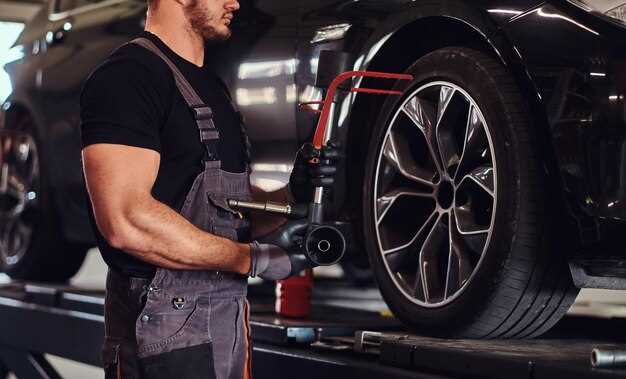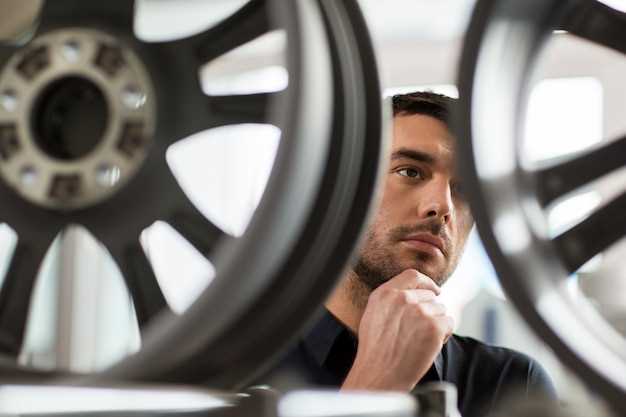
Achieving the perfect alignment of wheels is critical for optimizing track performance in any vehicle. The proper setup of wheels ensures that each tire functions efficiently, leading to improved handling, enhanced stability, and reduced wear. Without an accurate alignment, even the most advanced vehicles can suffer from a range of issues that compromise performance on the track.
Wheel alignment involves adjusting the angles of the wheels so that they are parallel to each other and perpendicular to the ground. This process not only affects how the vehicle drives but also influences tire life and fuel efficiency. An optimal alignment setup can make all the difference when it comes to maintaining control during high-speed maneuvers and maximizing grip on the track surface.
In this article, we will explore the nuances of wheel alignment and the various types of setups that can be employed to enhance track performance. Understanding the importance of precise wheel alignment is essential for racers and enthusiasts alike, as it lays the foundation for a successful racing experience.
Understanding the Basics of Wheel Alignment for Racing

Wheel alignment is a critical aspect of optimizing track performance in racing. Proper alignment ensures that the wheels of a vehicle are positioned at the correct angles relative to each other and to the road. This alignment is essential for maximizing traction, handling, and overall stability during high-speed maneuvers.
There are three main angles involved in wheel alignment: camber, caster, and toe. Each of these angles plays a significant role in how a car behaves on the track. Camber refers to the tilt of the wheels in relation to the vertical axis. Negative camber can improve grip during cornering by ensuring a larger contact patch when the vehicle leans into a turn.
Caster, on the other hand, is the angle of the steering axis when viewed from the side of the vehicle. A positive caster angle enhances straight-line stability and allows for better steering feedback, making the car more responsive during races. Finally, toe describes the direction in which the wheels point, either inward or outward. Adjusting the toe helps fine-tune the car’s handling characteristics, influencing how it responds to steering inputs and stability under acceleration.
For racing applications, achieving the correct wheel alignment is crucial. A misalignment can lead to uneven tire wear, diminished performance, and unpredictable handling. Teams often use specialized alignment equipment to measure and adjust these angles, ensuring that each vehicle is optimized for the specific track conditions and racing strategies.
In conclusion, understanding the fundamentals of wheel alignment is vital for any racing team looking to enhance their track performance. By fine-tuning camber, caster, and toe settings, teams can ensure their vehicles achieve maximum grip, stability, and responsiveness, ultimately leading to improved lap times and competitiveness on the track.
Key Tools and Techniques for Accurate Track Setup

Achieving optimal track performance requires precise alignment of wheels to ensure stability, handling, and tire longevity. The following tools and techniques are essential for accurate track setup.
One of the fundamental tools for wheel alignment is a laser alignment system. This system utilizes laser beams to measure the angle of each wheel relative to the vehicle’s centerline. By providing real-time feedback, it allows for precise adjustments to ensure that all wheels are aligned correctly, maximizing traction and minimizing tire wear.
Another valuable tool is a camber gauge. This device measures the angle of the wheels in relation to the vertical axis. Proper camber settings are crucial for track performance, as they influence how tires make contact with the road. Adjusting camber angles can improve cornering grip and stability, especially during high-speed maneuvers.
A tow gauge is essential for measuring toe alignment, which refers to the angle at which the wheels point relative to the vehicle’s longitudinal axis. Proper toe alignment helps reduce tire scrubbing and enhances straight-line stability. It is critical to ensure that both front and rear wheels are aligned within the specifications of the vehicle, particularly for racing applications.
Additionally, a corner weight scale can be used to measure the load distribution across all four wheels. Achieving optimal weight balance is vital for improving handling and overall performance on the track. Unequal weight distribution can lead to understeer or oversteer, affecting driver control and lap times.
Using an adjustable suspension system allows for fine-tuning of ride height, which greatly influences handling characteristics. Lowering the center of gravity can enhance cornering capability, while the ability to adjust dampening settings provides additional control over the vehicle’s response to track surfaces.
Finally, meticulous attention to tire pressure also plays a pivotal role in track setup. Maintaining recommended air pressure ensures uniform contact with the track, which is essential for maximum grip and tire performance. Regular monitoring and adjustments before each session can optimize track conditions.
In summary, employing these key tools and techniques for alignment and track setup not only enhances performance but also contributes to the safety and longevity of both the vehicle and its components. A well-aligned vehicle will respond better to driver inputs, leading to improved lap times and an overall rewarding racing experience.
Tuning Wheel Alignment for Different Track Conditions
Achieving optimal performance on the track largely depends on precise wheel alignment. Each track surface presents unique challenges that can influence how a vehicle behaves. Understanding these conditions and adjusting the alignment setup accordingly can significantly enhance traction, handling, and overall speed.
On a smooth, asphalt track, a more aggressive alignment setup is beneficial. Lowering the toe angle and increasing negative camber can enhance cornering grip. This allows the tires to maintain better contact with the surface during high-speed turns, resulting in improved stability and control.
In contrast, on a rough or uneven track, a more relaxed alignment is advisable. Increasing the toe angle slightly can help prevent the tires from losing grip over bumps. Additionally, a smaller negative camber can provide a larger contact patch, enhancing stability on unpredictable terrain.
Wet or slippery conditions require an entirely different approach. In these scenarios, a conservative alignment setup is critical. Reducing negative camber can help maintain a wider contact area, while a slight toe-in can improve straight-line stability and cornering feedback, reducing the likelihood of oversteer.
Ultimately, fine-tuning wheel alignment based on track conditions can be the key to unlocking a vehicle’s full potential. Regular assessment and adjustment of the alignment setup ensure that a driver can respond effectively to changing track dynamics and maintain competitive performance.






